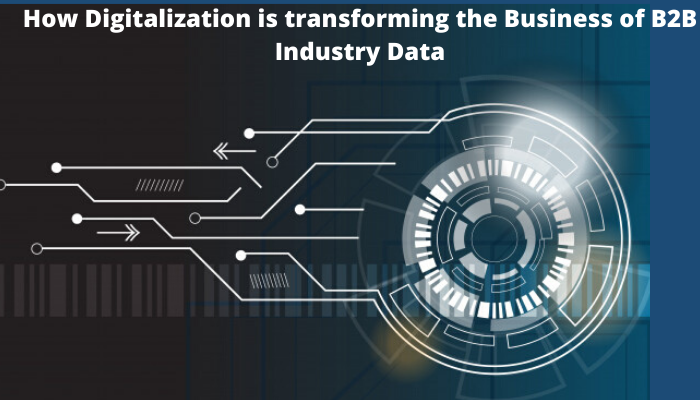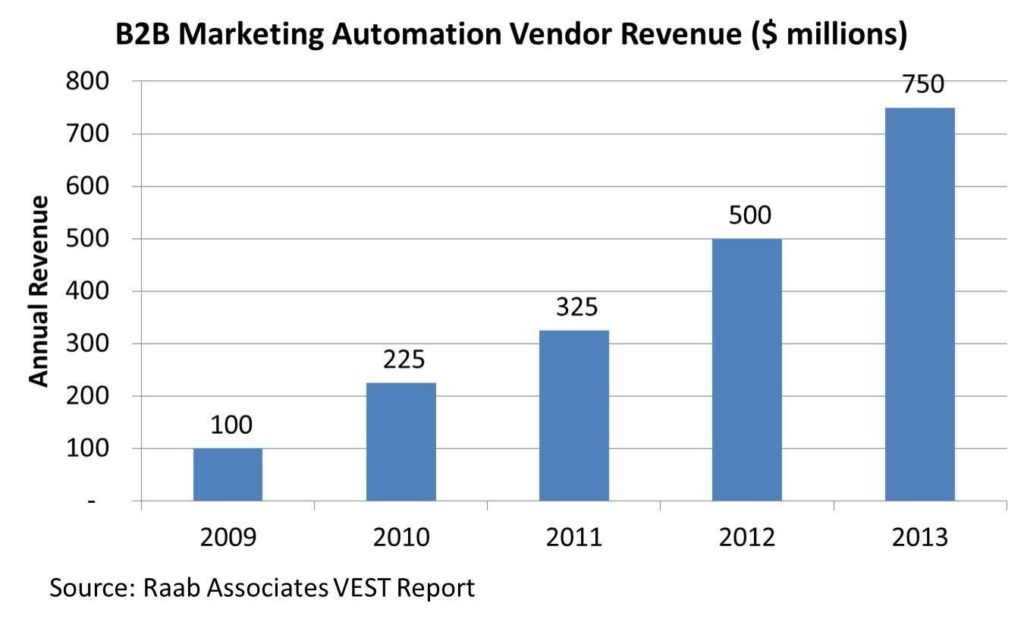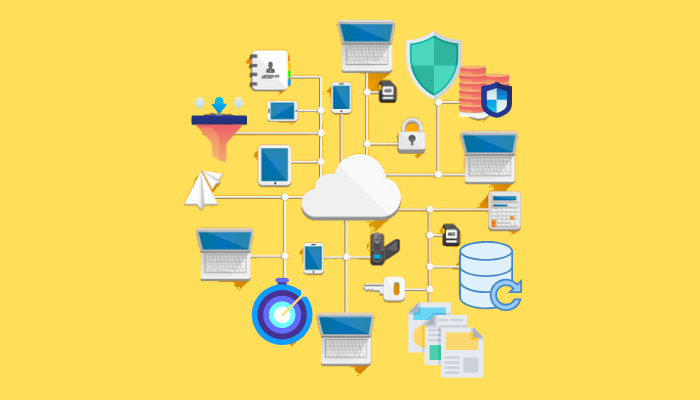‘Digital transformation’ is a term that implies to structure the organizational, operational, and technological foundation of your business to create a seamless and robust experience. The future belongs to those who will be able to transform their businesses digitally as far as the B2B industry is concerned. It is high time that businesses move themselves to the digital age. This will completely change the way how businesses are running today. The customer experience will be enhanced and transform the way clients interact with the organizations. Organizations will have to upgrade themselves and use professional services like data mining services, data scrubbing, data verification, b2b lead generation, data appending, web scraping, etc. if they want to stay in the game.
Going digital benefits not only the clients or businesses but also its stakeholders. According to a study, the companies who have successfully mastered digital transformation have seen nine per cent more shareholders returns than their peers. Also, there was five times revenue growth than their counterparts. These stats show why digital transformation is needed for the inclusive growth of an organization.
Digital Transformation involves the usage of digital solutions to streamline processes and improve overall customer experience. In the early days, digital transformation was restricted to improving efficiency. But now the focus has shifted to making the client experience better. But there is no one type-fit recipe that suits all for digital transformation. B2B digital transformation will vary from business to business. Every organization will have to restructure their processes in a way that works best for them.
However, every organization would be required to update its systems, find digital solutions, and create a cohesive internal and external channel experience. The digital transformation under B2B varies from that of B2C as the latter requires reorganizing its selling channels. B2B organizations prefer to restructure to sell directly to their clients through e-commerce channels. This eliminates any need for middlemen, thus saving a lot of cost and time. We have seen how digital transformation is done in organizations and how it varies from one business to business, but one thing that is required across all businesses is a strong culture and change in the mindset of the team.
In this technological era, customers and clients would want simple and easy digital solutions. Therefore, they will move to companies that provide such seamless experiences and leave those who are have not transformed digitally. When it comes to B2C companies, they have already undertaken steps to digitally transform to some extent or plant to do so shortly. But B2B companies are always slower to adapt to new trends, including digital transformation. The reason behind this is that the environment for B2B is very complex, and they have to negotiate with the vendors and influencers. Also, they have many moving parts and longer deal cycles. On the other hand, it is not quite the same for B2C companies that make it easy for them to transform.
Many of the B2B companies do not go for digital transformation as they do not see any potential gains out of this. Digital transformation is possible only when there is full commitment from the board. This may mean a complete cultural shift in some companies. B2B organizations should focus on the financial benefits of digital transformation so that they try to digitalize their business. Those organizations that do not participate in the transformational run would find themselves at great risk of getting left behind.
Companies looking for digital transformation should be aware of the fact that merely using the new technology would not fetch anything rather would be a waste of time, money, and other resources. To be successful, digital transformation should specifically focus on customer needs.
The best business practices in digital transformation consider the needs of the customer and how they can be met with the technology for a seamless experience. A true digital transformation facilitates customers to seamlessly find information digitally and employees to have access to the right information in one place. That is why it is said that digital transformation requires external as well as internal restructuring.
Here are some domains where B2B companies can do better to benefit from digital transformation.
Improvising on customer satisfaction
The key features of digital transformation are profitability, customer satisfaction, and speedy access to the market. B2B companies can put in efforts to qualify, bid, and win in renewing a deal. Industry based B2B companies are keeping customer centricity and satisfaction at priority. A perfect balance between digital and non-digital or analog is required to plan the strategy. In general, companies increase the customer-satisfaction score by improvising operational performance through speedy and simple interactions. This cuts down almost half of the costs but enhances the experience of the customer with the company. Employees’ of the company or business also get satisfied as there exists a one-to-one connection between customer and employee, which adds to employees’ work performance.
Ensuring Digitalisation at a strategic level
Companies that outperform have digital strategies at the core that are designed to gain competitive advantage. But most B2B companies do not have a digital strategy. Lack of digital strategy means that the focus is never anchored in customer satisfaction and often suffer from insufficient investments. According to a study, only 9 per cent of B2B companies accepted that digital strategy is their top priority. The majority of B2B organizations just make use of technology in their processes which is not sufficient. To be successful, companies need to embrace an inclusive digital strategy.
Also Read: B2B Customer Retention Strategies – How To Retain Your Best B2B Clients
Utilize data efficiently
B2B companies should use advanced analytics to improve their processes that help in giving insights about the customers. They should make use of tools that aid in marketing and sales understand what offers, products, and services are hitting the right note. This is where tools and services like address search, data appending, data scrubbing, data verification, and mining come in handy. A company should be able to know when the customer opened their email and how long he/she took to read that email and what action they took after that. This will help the organization to empower their sales and marketing team and would help to increase their sales and revenue.
Also Read: Ask Me Anything: 10 Answers to Your Questions about Telesales and Telemarketing
Connecting end-to-end processes for effective decision making
The major cause of failure of B2B companies is that they fall short when it comes to connecting automated processes to the front end. They have been very good at automating the back office. This non-coordination between front and back office is the reason they fail in presales activities. Successful B2B companies use automated decision-support processes and other tools and services like b2b lead generation, etc. to link all their processes with customer, sales, and order data. This helps them generate a comprehensive view of the customer across the business. This integrated network gives the sales and marketing team access to all the client service, support, and other information they need to service their clients. An integral part of this digital shift involves leveraging online platforms to provide customizable solutions that cater directly to client needs. One such innovative offering is the ability to design and order custom shirts online. This not only showcases how digitalization enables unique customer experiences but also underscores the significance of personalization in today’s business marketplace.
Creating a culture of innovation
The majority of B2B companies take a long time to move from concept to implementation of their digital initiatives. This results in losing a competitive advantage. To avoid this, they can use rapid prototyping processes that foster innovation and enhance customer satisfaction. Companies that outperform deploy dynamic development practices and rapid experimentation. They work actively with third parties and use events like digital hackathons, etc. to shorten their learning curve. Some of them use Minimally Viable Products (MVPs) to speed up their process. These fast test-and-learn development tools facilitate innovation and show the company’s ability to cater to all types of customers and clients.
Overhauling and restructuring of the organization
There are a lot of organizational challenges that can be a hurdle to a company’s digital initiatives. Factors like lack of transparency, inward-facing processes, confusing roles of the teams, no prioritization from the top-level leaders are the reason why implementation of digital initiatives fails. To achieve a successful transformation, a complete overhauling of existing systems should be done. This is what Successful B2B companies do. They restructure their organization in a way that aids in digital transformation. These companies are willing and able to dust off their metrics and strategically decide on the measures and incentives that will help them get the results they want. This is not achieved by creating a more complex and several key performance indicators. Instead, just reviewing how the company measures progress and creating a few metrics can get the job done.
Provide a consistent experience
There are numerous channels used by B2B buyers to purchase. These channels are field sales, online stores, etc. Most of them are generated through b2b lead generation. According to research, a B2B buyer on, an average, uses six different channels to decide on the purchase. Using so many different channels takes time which the B2B companies can take this to their advantage. However, taking advantage means having strong cross-channel integration. And that is where the majority of B2B companies struggle. They have disintegrated selling models that make it tough for the clients or the buyers to move seamlessly from face-to-face interactions to the online environment whereas successful companies have a single point of access to all the transactions for their clients. They do it by restructuring their customer-data processes.







